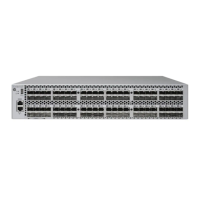NOTE: You can specify only one node name with the BACKUP syntax. You can only back
up files from one node during a single BACKUP operation. Run BACKUP once for each node
that you want to back up.
fileset-list
is one or more filesets in the form:
( fileset [ , fileset ] ... )
For example, this fileset-list specifies all files on the subvolume PAYROLL (that are on
the volume $DATA), and all the files on the volume $ACCOUNT that begin with B:
($DATA.PAYROLL.*, $ACCOUNT.*.B*)
qualified-fileset-list is:
{ list-element }
{ ( list-element [ , list-element ] ... ) }
A qualified fileset-list allows further exclusions from a fileset-list.
list-element is:
fileset-list [ qualifier [ qualifier ] ... ]
qualifier
specifies qualifying criteria for including files or objects in fileset. A qualifier is one of:
[ EXCLUDE fileset-list]
[ FROM CATALOG[S] catalog-list]
[ START filename]
[ WHERE expression]
Each qualifier can be specified only once for a given fileset-list. You can specify
qualifiers in any order.
An example of a list-element of a qualified-fileset-list is:
$DATA.PAYROLL.*X WHERE (ENSCRIBE AND INDEX)
File-Set List Qualifiers
For examples of BACKUP commands that use qualified file set lists, see Using Qualified File-Set
Lists (page 74).
EXCLUDE fileset-list
specifies files to exclude from the operation. The EXCLUDE qualifier works the same as the
BACKUP NOT option.
FROM CATALOG[S] catalog-list
specifies backup of SQL objects in catalog-list that match the fileset-list. This
qualifier specifies one or more SQL catalogs that contain descriptions of the SQL objects (tables,
indexes, views, or SQL programs) to be backed up. The SQL catalogs are specified by volume
and subvolume (or by a CLASS CATALOG DEFINE name).
catalog-list is any of:
[$volume.]subvolume
( [$volume.]subvolume [ , [$volume.]subvolume ] ... )
define-name
( define-name [ , define-name ] ... )
BACKUP Syntax 43

